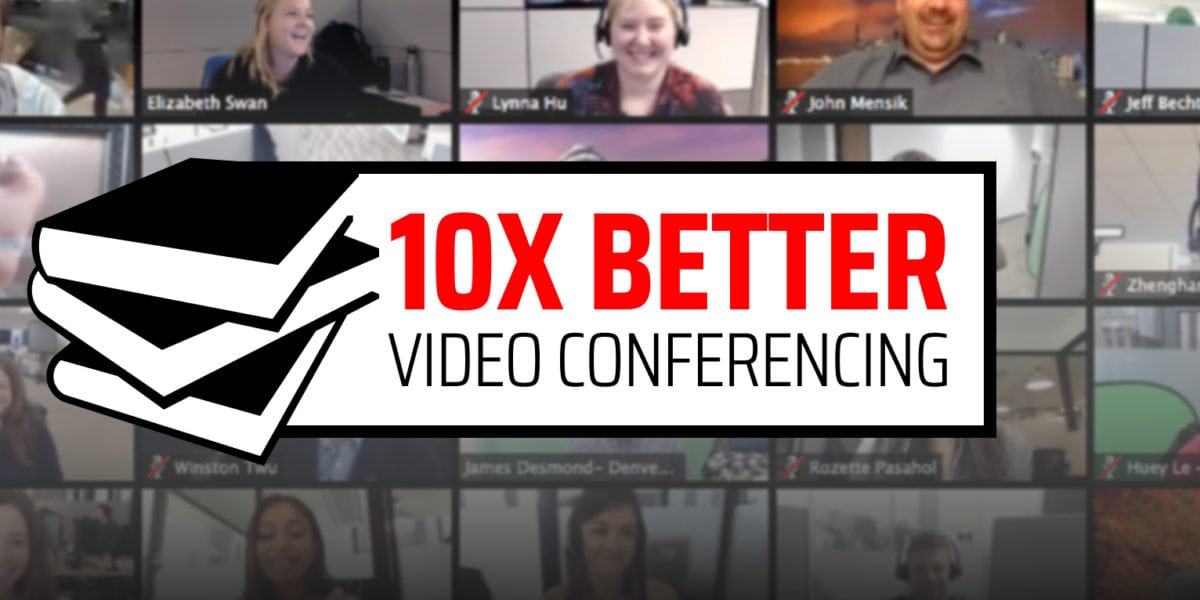Look at this image below.
On the left – you have a professional video setup (newscaster) and on the right, you have a guest with an amateur video conferencing setup.

The two images are obviously dramatically different in quality. The newscaster comes across as professional while the amateur on the right comes across as visually awkward, less professional and less trustworthy.
And this amateur isn’t just any joe-schmo – he’s the CEO of a large multinational corporation.
Now – you’re probably thinking that I’m being unfair to compare the million-dollar professional newscaster setup to a person working from home. And you’re right – the home setup won’t ever be as good.
But would you be surprised if it could be darn close with just a simple stack of books?
Common Video Conferencing Mistakes
The CEO above – and I’m guessing most of you – is using a laptop at home for work. And it’s set up something like this.

This makes perfect sense of course – this is how you typically use your laptop to type, surf, etc.
But when you jump on a video conference – 3 problems emerge:
- The top of the laptop screen (where your video camera is) is several inches below your face. The result is the video camera is ‘looking up’ from below.
- The laptop screen is at ~45 degrees so the camera angle is actually looking into your nostrils.
- Since the laptop is positioned for typing – the keyboard is relatively close to you (~12 inches from your body). As a result – the video camera is also very close and creates a ‘zoomed in’ image when video conferencing.
Unfortunately – these 3 problems created the terrible CEO video image you saw above. And this is occurring in your images too.
I don’t know about you – but I’ve never met anyone that looked good zoomed-in from below staring up their nostrils.
Easy Solution
Believe it or not – the solution is super super easy. All you need is a stack of books.
3 Simple Steps
Step 1: Grab a stack of books and place your laptop on top. The goal is to raise the laptop CAMERA TO BE AT EYE LEVEL. This added height enables you to look straight into the camera – a key to the professional configuration. The amount of books depends on your height – but for me – this is a stack of books ~7 inches tall.

Step 2: Reposition the laptop screen to be at or near 90 degrees. This removes the upward angle of the video image. Ideally – you want the screen to be perpendicular to your body.

Step 3: Push the entire setup further away from your body than you would while typing. The screen is ideally 24 inches away from your body. This distance then gets the right amount of your torso in the frame – another key to the professional look.

And that’s it. Your setup is now nearly as good as the million-dollar newscaster’s setup.

Conclusion
With all of us spending more and more time on video – it’s time to master the basics. It’s amazing how a simple stack of books with a bit of spacing can dramatically improve your video conferencing quality.
And if you’ve done the book trick – and are now looking for 5 more advanced lessons – see this article.
If you have any questions – please feel free to contact me at @andytryba.









